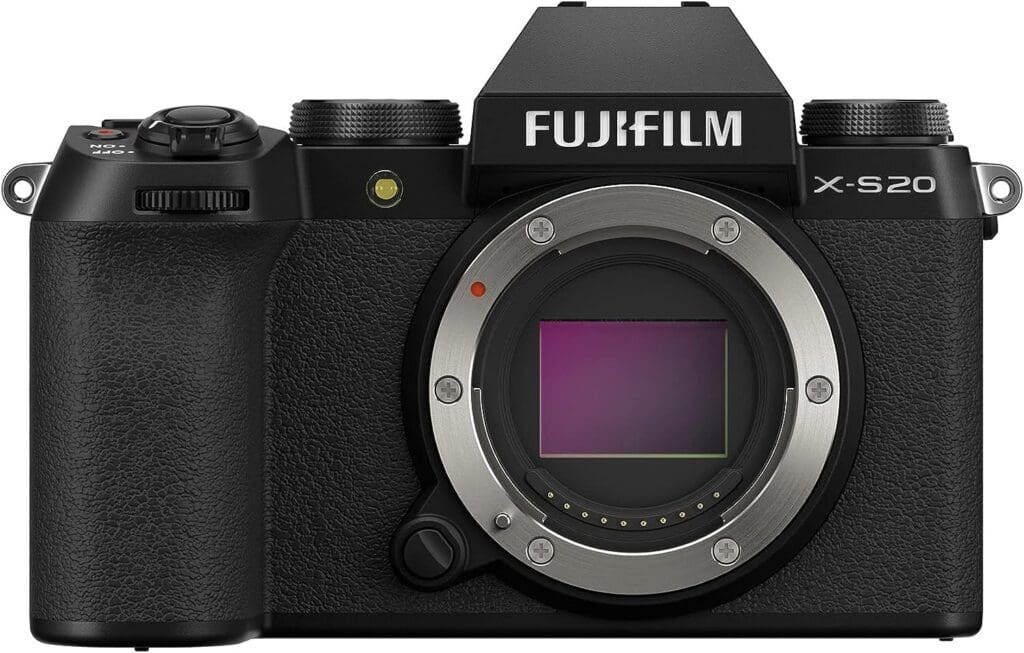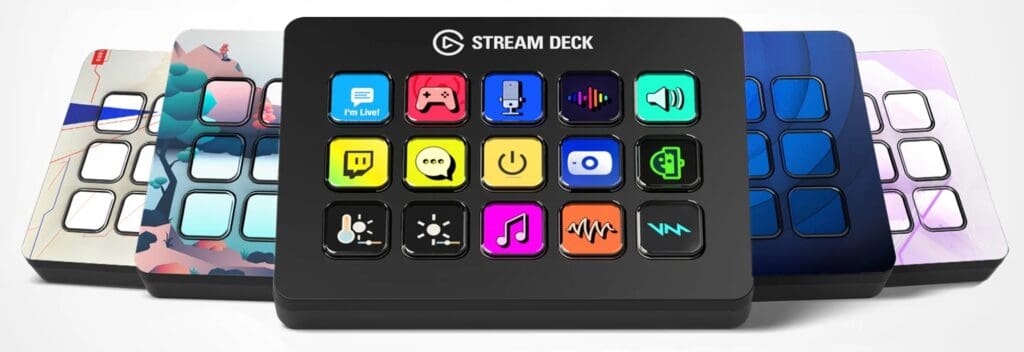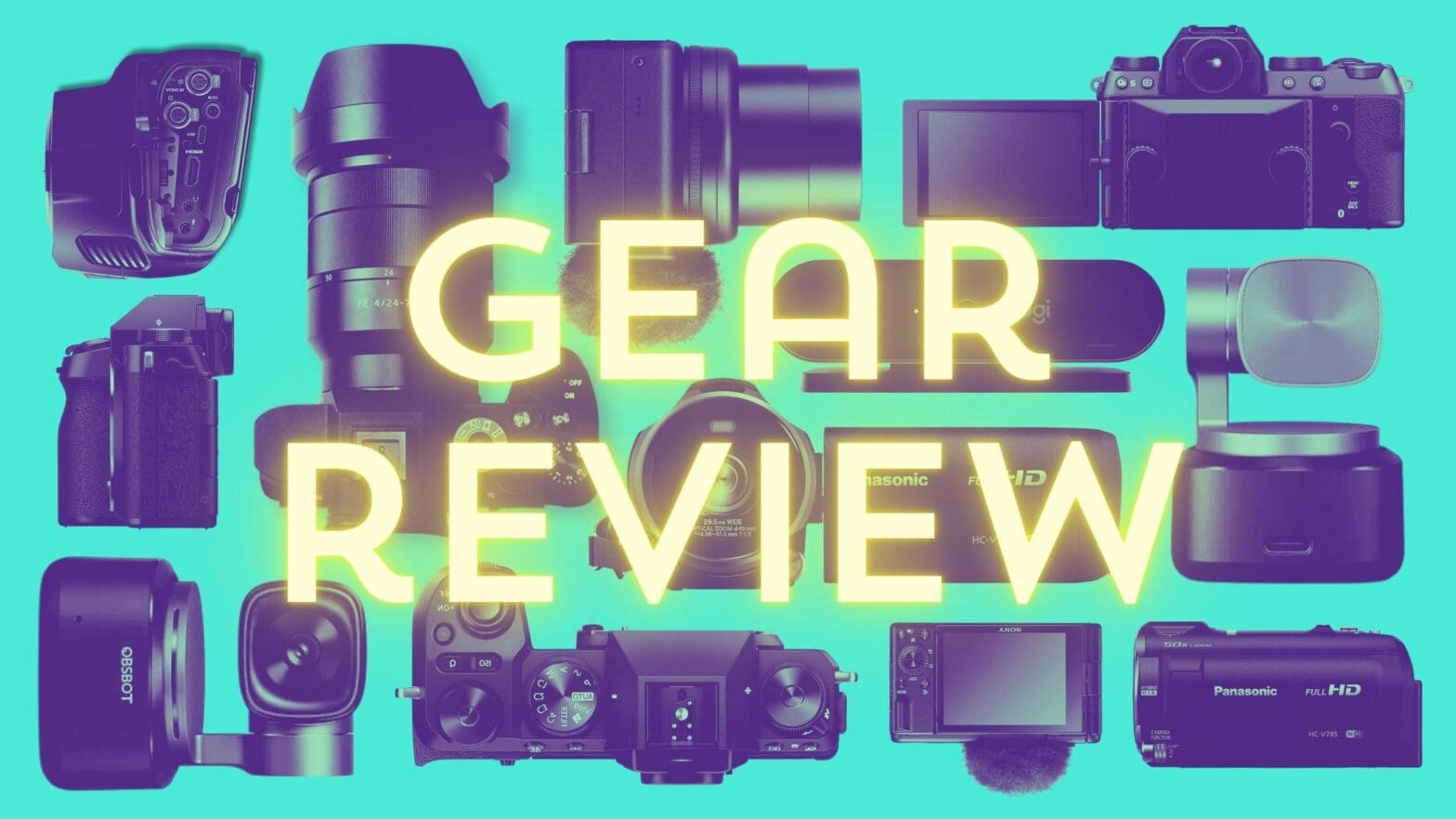The popularity of podcasts is undeniable. They’re perhaps one of the best ways we’ve ever come up with to entertain, educate, and to allow anyone to share their unique perspectives with the world. And while audio podcasting is great, adding a video element to your podcast is the next logical step to increasing engagement and expand your podcast’s reach to platforms like YouTube, Instagram, TikTok,Facebook, and more.
To do that, however, you’re going to need a video camera. But what are the best cameras for podcasting? Do you need a big DSLR or will a compact camera or webcam do the trick? How many do you need? And what about resolution and live streaming?
Ultimately, the best camera for video podcasting is one that will help you deliver good quality audio and video to your audience. It gives you the features that make it easy to use, whether you’re behind the camera or in front of it. This post is going to help you narrow the choices down with some of our favorites, while keeping important things like budget in mind as well.
Let’s roll.
Sony ZV-1 II
$900
The best overall camera for video podcasting
Pros:
- ✅ High-res 4K and 1080p video
- ✅ Wider 18mm lens to fit more in frame
- ✅ Intuitive, flippable touchscreen
- ✅ Several mic options
Cons:
- 🚫 Doesn’t come with a USB-C cable
- 🚫 No headphone jack
- 🚫 No interchangeable lenses

If you’re looking for the best camera for video podcasting (or any kind of recording really), our pick is the Sony ZV-1 II. It has the image quality and features you need to record high-quality 4K video at a reasonable price. The followup to Sony’s super-popular ZV-1 vlogging camera, the ZV-1 II features auto focus and face recognition. The 18-50mm full-frame lens is perfect for video podcasting, as it allows you to get more in the frame in a wide, but can also go tight on individual guests.
The ZV-1 II’s one-inch sensor delivers 4K video at up to 30 frames per second (fps), which leaves room for cropping in on subjects in post. That’s great for creating a multi-camera effect in the edit, even if you don’t have multiple cameras. It also records full HD 1080p video up to 120 fps, which is good if you want to use the camera for live streaming. The micro HDMI out also allows you to record to an external device.
Key for video podcasting is the ZV-1 II’s flip-out touchscreen, which lets you see your framing as you go and control functions such as focus points, shutter speed, ISO, and, of course, starting and stopping your recording. Sony has an iOS and Android app which offer remote access to even more features.
While you’re likely recording your podcast’s sound directly to your computer with a good mic setup, you have the option to use the ZV-1 II’s solid built-in omni-directional mic, or, at the very least, use it to sync up your audio and video in post. There’s also a 3.5mm mic input for external mics.
Battery-wise, the Sony ZV-1 II’s lasts up to 45 minutes, which isn’t bad. As our pick for the best camera for video podcasts though, you can use a dummy battery that allows you to plug it in to go as long as you need to (or until the SD card is full).
Compact, full of features, and at a price that’s in a sweet spot for even beginners to afford, with features that grow with you, the Sony ZV-1 II is the best overall podcasting camera for most people.
Fujifilm X-S20
$1,300 (body only)
The “prosumer” favorite
Pros:
- ✅ Dedicated vlogging presets
- ✅ Excellent subject tracking
- ✅ Fast auto focus
- ✅ Interchangeable lenses add flexibility
Cons:
- 🚫 Not cheap
- 🚫 Lenses can get expensive

The prosumer-level Fujifilm X-S20 is one of the best mirrorless-mount cameras on the market for the price. A favorite of YouTubers, its fully rotating 3-inch LCD touchscreen and changeable lens system lets users build a roster of lenses for any job, be it video podcasting or still photography. Keep in mind that lenses are worth having, but the cost soon adds up. Lenses for the X-S20 run anywhere from $400 on the low-end to several thousand dollars on the high.
The X-S20’s 26.1MP sensor is the same as its predecessor, the S10, but this time offers stunning 6.2K video at 30 fps with impressive 10-bit color. Overkill for most video podcasting applications but valuable for more serious video hobbyists. It’s also capable of 4K at 60 fps and 1080p at 60 fps, as well as high-speed recording at 240 fps for slow motion.
In addition to improved internal image stabilization, auto focus, and subject tracking to keep you and your podcast guests at their crispest, a dedicated “Vlog Mode” has been added with presets such as Background Defocus Mode and Priority Products Mode. The former lets you set parameters for the amount of background blur you want. The latter disables the face/eye auto focus feature. This lets the camera track any objects or products you hold up to the camera. And like the ZV-1 II, the X-S20 has a remote control smartphone app, Fujifilm XApp (iOS and Android).
For inputs and outputs, the X-S20 features two 3.5mm audio jacks, one for a microphone, one for headphones, and a micro HDMI port with support for RAW video output. Saving perhaps the best for last, the Fujifilm X-S20’s battery is a beast, offering up to 110 minutes of continuous 4K recording. But unlike the Sony ZV-1 II, you can actually power the X-S20 via USB with a power bank or adapter for the longest podcast sessions.
Panasonic Lumix HC-785K
$600
Best camcorder for podcast beginners
Pros:
- ✅ Dedicated video camera
- ✅ Great price for the features
- ✅ Perfect for beginners on a budget
- ✅ 20x optical zoom
Cons:
- 🚫 Lacks 4K resolution
- 🚫 No live streaming

If you’re ready to take that next step from recording your video podcast with your smartphone, then a camcorder like the Panasonic Lumix HC-V785K is a cost-effective and easy-to-use option. Plus, you still get to make use of your smartphone (more on that in a second).
While 4K resolution is fast becoming the norm. It’s not exactly cheap and for many, full HD 1080p still gets the job done. The HC-V785K (and its predecessor, the V770K) have a reputation for producing crisp video with less noise, even in low light, from its 12.7 megapixel sensor. Plus, an HDR mode brings out detail in both the bright and dark for video that pops.
The HC-V785’s 20x optical zoom might be overkill for a video podcast camera. But given the price, you might be able to pick up a second to get more coverage and angles.
The V785K’s Wireless Twin Camera feature is unique. It lets you connect your smartphone and use it as a second camera in real-time. You can see picture-in-picture on the camcorder’s 3-inch flip touchscreen. Or record from your smartphone to the HC-V785K as a backup file that you can use in editing.
Of course there’s an app you can control the camcorder over Wi-Fi, too. This Wi-Fi connectivity also makes transferring video files from the camera to your computer easy.
Like a lot of video cameras, the Panasonic Lumix HC-785K has an eco mode that shuts things down after 15 minutes. But also like other cameras, it can be disabled for longer recordings, like podcasts. Battery life on the HC-V785K is not awesome at just one hour, but you can use the camera with the AC adapter.
Obsbot Tiny 2
$329
Best webcam for video podcasting
Pros:
- ✅ Beautiful 4k video
- ✅ Excellent microphone
- ✅ PTZ (pan, tilt, zoom) controls
Cons:
- 🚫 Expensive relative to simple webcams
- 🚫 Some odd, unnecessary features

It might be small but the Obsbot Tiny 4K webcam packs a ton of sophisticated AI features, smart auto subject tracking and autofocus, and 4K recording into its miniscule frame, all of which can take your video podcasting to the next level.
With improved low-light features and a bigger sensor than its predecessor — a 1/1.5-inch 50 megapixel CMOS — the Obsbot Tiny 2 4K offers up super clear video and some added ISO options for more flexibility in a wider variety of lighting situations. But what hasn’t changed is the Tiny 2’s excellent gimbal and auto tracking features, that keeps you and/or your podcast subjects in focus, centered, followed, zoomed in/out on, and more, automatically, should you choose. This could be a great choice for those with multiple people on camera or if you happen to move around a lot during your show.
Additionally, the Tiny 2 4K features voice commands and hand gestures that, with a little playing around, can give you some convenient control if you record solo or without a camera operator. Functions like zoom, multiple zone position presets you can tell the Obsbot to move to, and subject tracking on/off can be easily controlled with your voice. With that being said, if you’d rather the simplicity of a handheld remote, the Tiny 2 has one too.
The Obsbot Tiny 2 4K can be mounted on top of a monitor, tripod, or other locations, and can shoot video in multiple resolutions, including 720p, 1080p at 30 or 60 fps, and 4K at 30 fps. Plus, the Tiny 2 maintains the superb mic and sound of the last generation should you want to use it for your podcast’s sound as well.
Lastly, the Obsbot Tiny 2 can be connected to the Obsbot UVC to HDMI Adapter for excellent video capture to your computer. But live streamers will appreciate the Tiny 2 4k’s compatibility with the Elgato Stream Deck. This handy panel-style streaming control hub can do things like automate scene switching and shortcuts for streamlined, er, streaming.

The Best Camera for Video Podcasting: Conclusion
Audio podcasting is a great way to engage an audience and adding video into the mix allows you to expand your reach.
If you’re looking to add new gear specifically for video podcasting, do yourself a favor and standardize. Where possible, choose one camera and get multiples of that camera as opposed to mixing and matching. It makes every step — from initial setup to final edit — much easier.
We’ve explored a range of options. From do-it-all devices like the Sony ZV-1 II, to high-end prosumer cameras like the Fujifilm X-S20. To dedicated camcorders like the Panasonic Lumix HC-785K, and super-smart webcams like the Obsbot Tiny 2 4K.
Regardless of your choice, the key lies in selecting a camera that not only delivers excellent audio and video quality but also aligns with your unique creative vision and technical needs.
get an unfair advantage on YouTube
Give your YouTube channel the upper hand and easily optimize for more views, more subs, and more of every metric that matters.
